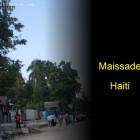ADVERTISEMENT
Cap-Haitien - Haiti Observer Blog
Cap-Haitien, Haiti Observer Blog. Read the following articles about Cap-Haitien
Cap-Haitian During the Colonization Period
The city of Cap-Haitian has a reach history, specially during the French colonization. This small city has its name changed at least four times. It as founded in 1670 by Bertrand d'Ogeron who saw the great opportunity at the time based on its geographic location. However, as the region started growing as an economic force for France, the city called at this time Cap-Francais became a major port to ship sugar, coffee, cotton and indigo. The merchants began to display their wealth and Cap-Francais acquired the name'Paris of the Antilles.'
The great wealth the city well know to be generating at the time was produced on the back of the African slaves who had replaced the indigenous peoples who had migrated from present-day Central and South America in the 16th century. Due to the colonization and introduction of new infectious diseases, as well as poor treatment received by the colonizers, the indigenous population rapidly declined.
College Notre Dame Du Perpetuel Secours - Cap-Haitien
The all-male private Roman Catholic primary and secondary school is located on the top of a mountain dominating the city. It was founded in 1904 by the Congregation of Holy Cross.
This school has a long history with the city of cap-Haitian. An entrance exam is required before you can be admitted to the school in order to maintain the academic quality.
Some of the most famous and successful people in the entire region were educated there. College Notre Dame Du Perpetuel Secours has produced religious, political figures and former Presidents. Former President of Haiti Jean-Bertrand Aristide was at one point a student at College Notre Dame Du Perpetuel Secours.
Cap-Haitien Art
This is a form of art which dominates Cap-Haitien in the northern seacoast of Haiti. The pioneer of the type of art is Philome Obin a Haitian art legend.
Cap-Haitien form of art is characterized by linear elements and the artistic use of paints and brushtokes.
The unique art is based on the subject of the Haitian way of life, the people, the Haitian culture and the country's heritage.
The artworks of Haiti are globally recognized. The revolution began in 1944 after the established of Centre D' art Haitian in Port au Prince by the legend Dewitt peters an American teacher. The industry has since developed beyond imagination to become the best in primitive art in the world.
Haiti Prepares for Carnival in Cap-Haitien
As part of its decentralization program the government of Haiti (GOH) has implemented since President Martelly assumed office, the city of Cap-Haïtien has been selected to be the venue for Carnival 2013. The event will be held on February 10, 11, and 12.
Ms. Elsa Baussan, representative from President Martelly's administrative staff, attended a meeting of the North-Area Office of the Ministry of Tourism (MOT) to plan the execution of Carnival in Cap-Haïtien. After the meeting, she spoke with the press, expressing President Martelly's desire tourists become acquainted with the "historical uniqueness of every region of the country"
Ardrouin Zéphyrin, North-Area's MOT representative, elated about the selection of Cap-Haïtien as Carnival's host, has committed all his department's resources to ensure the event is successful.
Cap-Haitian, A Fine Vacation Destination In Haiti
Cap-Haitian also known formerly as le Cap, Cap-Henri and Cap-Francais is located on Haiti's northern coast. It is the capital of the Department of Nord and is located near Milot, a historic town. It has around 190,000 inhabitants with indigenous migrants from South and Central America. During the colonial rule it was an important city where it served as the capital of the French Colony of Saint Dominigue from 1711 to 1770.
Anti Government And Revolutionary Movements
The capital was moved to Port-au-Prince. Initially, under the rule of King Henri Christophe, it was Kingdom of Northern Haiti's first capital. Infrastructure for transportation was not very good during that time. The city was destroyed by the 7th May 1842 earthquake.
Our objective is to share with you news and information about Haiti and the people of Haiti. Traditions, habits and the way we were or grew are alive in this site. We highly recommend that you Subscribe to our Newsletter and also share with us some of the things that are memorable and made us unique people.

 Something to think about
Something to think about  Newsletter
Newsletter  Maissade, Haiti
Maissade, Haiti  Haiti tech Summit
Haiti tech Summit  Haitians are a Proud People
Haitians are a Proud People